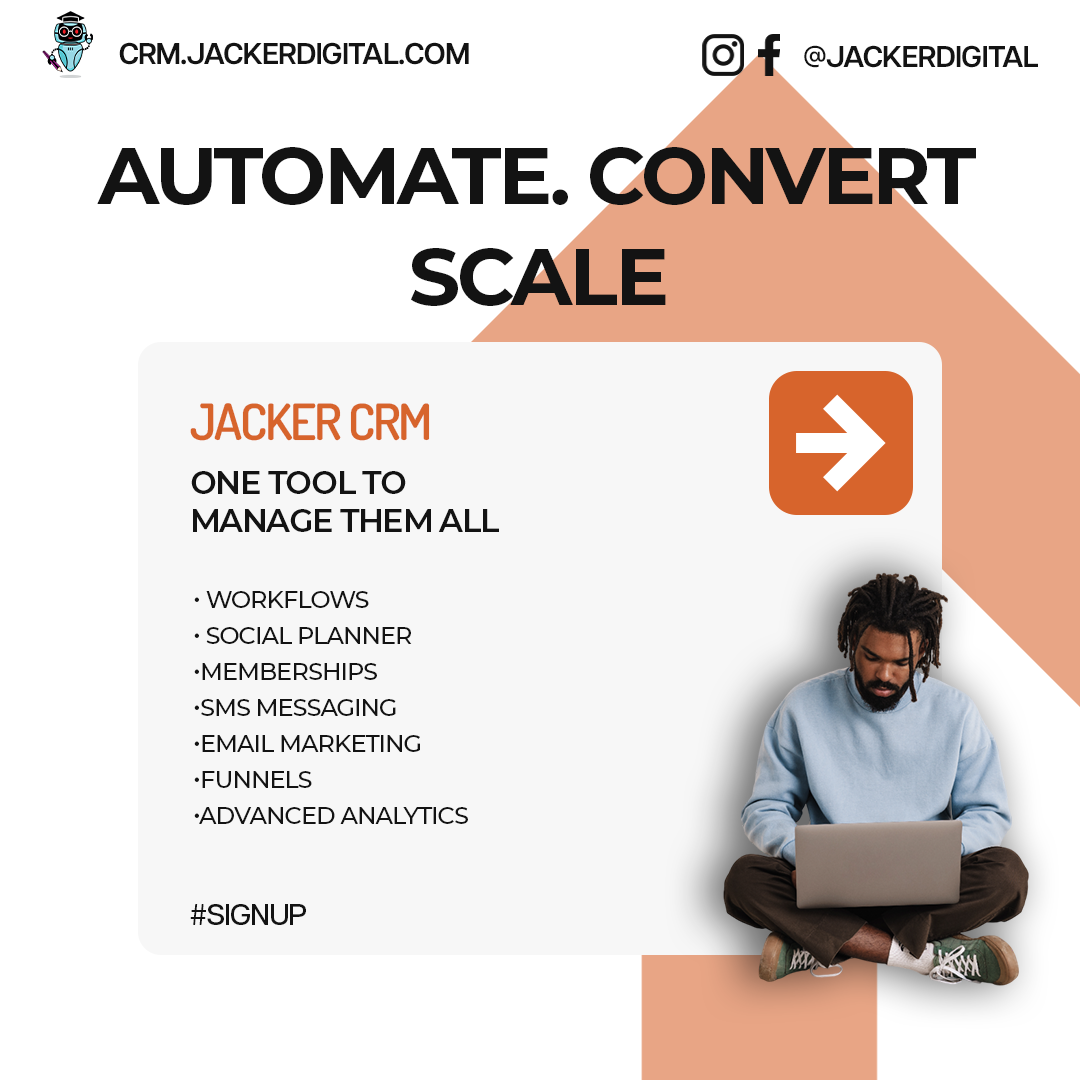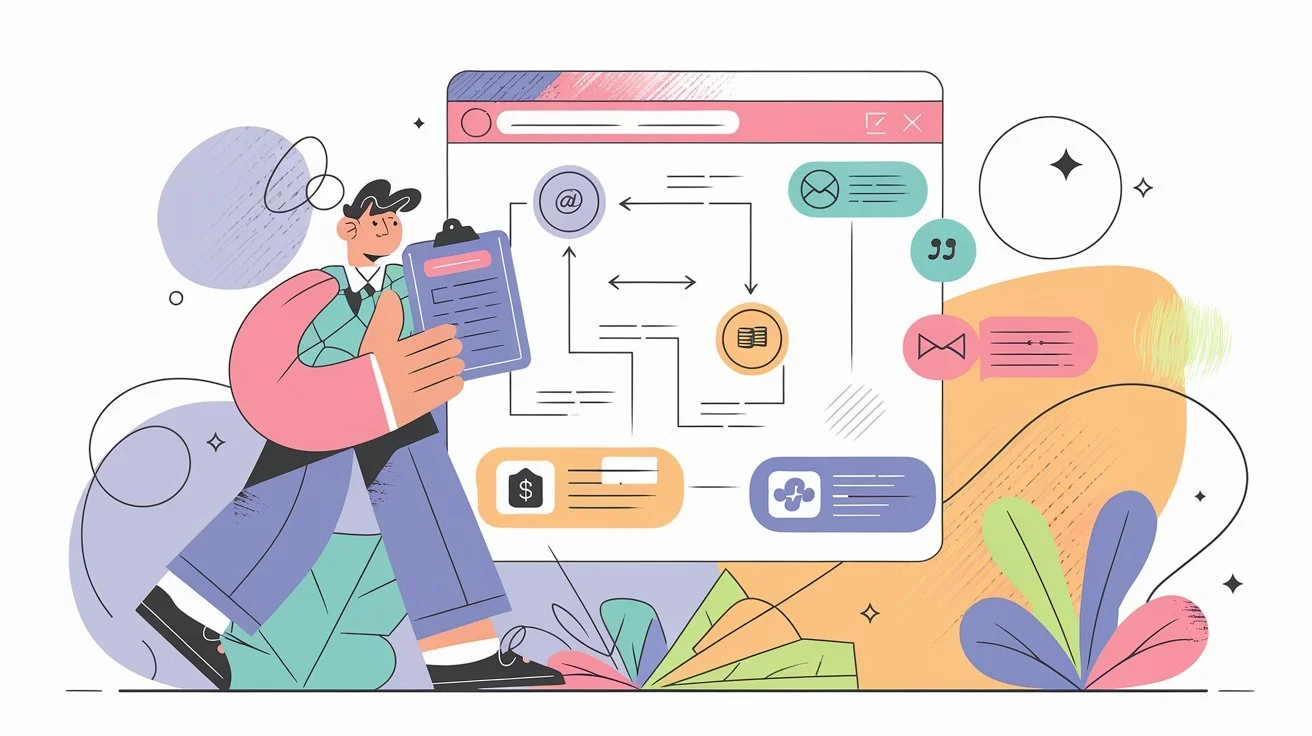5 Smart Automations Every Small Business Should Set Up Before 2026
- Save time with automation. Five practical systems I use to scale small businesses.
- Turn leads into clients. Capture, follow up, and book without manual work.
- Work smarter on social. Schedule posts and trigger keyword DMs with AI support.
- Create faster with AI. Use ChatGPT, Gemini, and Google AI Studio to generate content.
- Simplify client onboarding. Send contracts, invoices, and reminders with zero friction.
- Protect your reputation. Route happy customers to public reviews and unhappy to private feedback.
If there’s one thing I’ve learned running campaigns and building systems this year, it’s that automation isn’t just a fancy add-on, it’s the difference between scaling and burning out. Every brand I’ve helped grow in the past twelve months has leaned hard on automation to save time, close more deals, and keep things running smoothly in the background. When it’s done right, automation doesn’t “replace people”, it gives them their time back to focus on the parts of the business that actually need them.
Let’s be real… small business owners wear too many hats! Between posting content, replying to leads, and following up with clients, it’s easy to fall behind on the things that actually move the needle. That’s where automation changes the game. I’ve tested and built dozens of automations this year, from lead pipelines to AI-driven content systems, and I can tell you: they make a difference in your business. They’re practical, repeatable, and can be set up in a single afternoon. I’m going to walk you through five ways you can automate your business and how you can set them up before 2026.
Lets dive in:
Tip 1: Automate Your Lead Capture and Follow-Up
It’s never been easier to automate your entire lead pipeline, from first contact to conversion. Whether you’re chasing new clients or scaling e-commerce sales, you can now source prospects, nurture them, and handle all the necessary communication automatically.
To start any pipeline, you need leads. There are dozens of ways to find them: social media, paid ads, or even purchased data lists. One tool I like is IG Leads, which scrapes contacts from multiple sources and allows you to automate the process. That means you can feed thousands of leads, from places like the Google Maps directory, directly into your system without lifting a finger. Once you pair those leads with a CRM and a few smart trigger automations, you’ve built a machine that moves seamlessly from data sourcing to direct outreach.
IG Leads’ AI makes it easy to automate your lead generation process
You can even take it a step further by creating lookalike audiences or letting Meta’s AI match scraped data to user profiles, helping you target people who are most likely to convert.
For e-commerce, automated pipelines can work the same way. Users who engage with your ads can be automatically added to remarketing lists or segmented email flows. You can send personalized discount codes, follow up post-purchase, and automate shipping updates all while keeping communication on-brand and effortless.
Tip 2: Automate Your Social Media
Let’s keep it real, most of us are too busy for manual posting, and few small businesses have the budget for a full-time social media manager. That’s why automating your social media posting isn’t just convenient anymore, it’s essential as we move into 2026. When you automate your posting, you stop chasing the timeline and start showing up consistently, even on your busiest days.
But social media automation goes far beyond scheduling posts. You can build systems that move followers from your feed directly into your sales process. For example, try setting up automations that respond to users who comment specific keywords on your posts by sending them personalized DMs with coupon codes or links. You can take it a step further by using modern AI tools like ChatGPT or Gemini to power those interactions, making the messages feel natural, contextual, and human.
These types of automations don’t just save time, they create new pathways for conversion, turning your social media presence into a 24/7 marketing engine.
Tip 3: Automate Your Content Creation
Everyone’s using AI for content, and your customers are totally fine with it...as long as it's done right! The goal isn’t to feed them a pile of generic AI slop, but to use automation in ways that make your brand smarter, faster, and more creative.
There are now dozens of innovative ways to use AI to elevate your product photos, generate written content, and even transform content from one format into another. For example, you can build an automated workflow that turns your blog posts into audio content. Tools like Zapier can automatically send your new blog posts to ElevenLabs, generate a voice file, and automatically post it to Spotify or your favorite podcast platform.
You can also run that process in reverse, using ElevenLabs’ audio-to-text feature to turn podcasts into blog posts. With a few extra steps, you can connect that transcription to a language model like ChatGPT through a custom prompt that extracts key points, fills in missing context with sourced data, and outputs a polished article ready to post.
For more advanced users, tools like Google AI Studio make it possible to build personalized content engines tailored to your business. These AI-powered generators can produce branded assets in minutes, from blog outlines to product mockups. I recently helped a brand use this approach to build an app that transforms plain product photos into fully branded visuals using Nanobanana, giving every image consistent style and energy in just a few clicks. The same logic can be applied to generate blog drafts, captions, or even short-form video scripts automatically.
AI content automation isn’t about replacing creativity, it’s about amplifying it. When you combine smart tools with strategic automation, your content starts working harder, faster, and more in sync with your brand goals.
Tip 4: Automate Appointment Scheduling and Client Onboarding
We’ve already talked about how automations can move leads from interest to conversion, but the real magic happens once they hit your calendar. Automating your appointment scheduling and onboarding process saves hours of admin time and keeps clients engaged every step of the way.
Most calendar tools like Google Calendar or Zoom already have basic reminder features built in, but you can take it much further. Setting up an additional automation to send a personalized text one hour before the meeting can dramatically increase your show-up rate and cut down on late arrivals. Small touches like this make your business feel more organized and professional, while keeping your pipeline flowing smoothly.
You can also automate what happens after the meeting is booked. Connect your scheduling system to your pipeline or CRM so that when a lead becomes a client, they automatically receive contracts, invoices, or onboarding documents. From there, conditional trigger automations can check if those documents have been completed and send follow-up texts or emails if they haven’t.
These simple systems eliminate hours of repetitive admin work and make sure no client slips through the cracks. It’s a smarter, more efficient way to manage relationships, and it gives you and your team more time to focus on building new ones.
Tip 5: Automate Your Reviews and Testimonials
I can’t end this list without drilling it into your head, turn on your review automations! And don’t just turn them on …actually maintain them. Most e-commerce platforms and online booking systems already have built-in review request automations, but they’re often switched on and forgotten about. That’s a mistake! Even automated messages represent your brand, and when they’re generic or robotic, they disconnect from the same energy that converted your customer in the first place.
Your review requests should feel like an extension of your brand ecosystem: visually consistent, on-tone, and conversational. Instead of sounding like an automated extraction, they should sound like a human follow-up that genuinely values feedback and invites communication.
Beyond asking for reviews, you can also use automations to segment and route feedback intelligently. For example, create a quick pre-rating message that filters users based on experience. Those who rate positively can be sent directly to your preferred review platform, while users with negative experiences can be redirected to a private feedback form. This small workflow can protect your brand reputation, improve customer recovery, and turn negative experiences into opportunities to build loyalty.
Conclusion
Boom, boom Bam! Those are my five recommendations to start automating your business using some smart systems connected to common triggers. Honestly, it was more like 25 suggestions and recommendations in there but we will just count the topics overall. I hope that i have been able to help you start the gears going on how you can build some automated systems that help save yourself some time and upgrade certain parts of your business. The combinations are honestly endless, and with tools like AI powered tools, CRM's, and connector tools like Zapier you can honestly automate and connect just about anything today.
Put these tips to work!
Jacker CRM builds the workflows for you so new leads get a reply, appointments get reminders, and customers leave reviews without a nudge.








